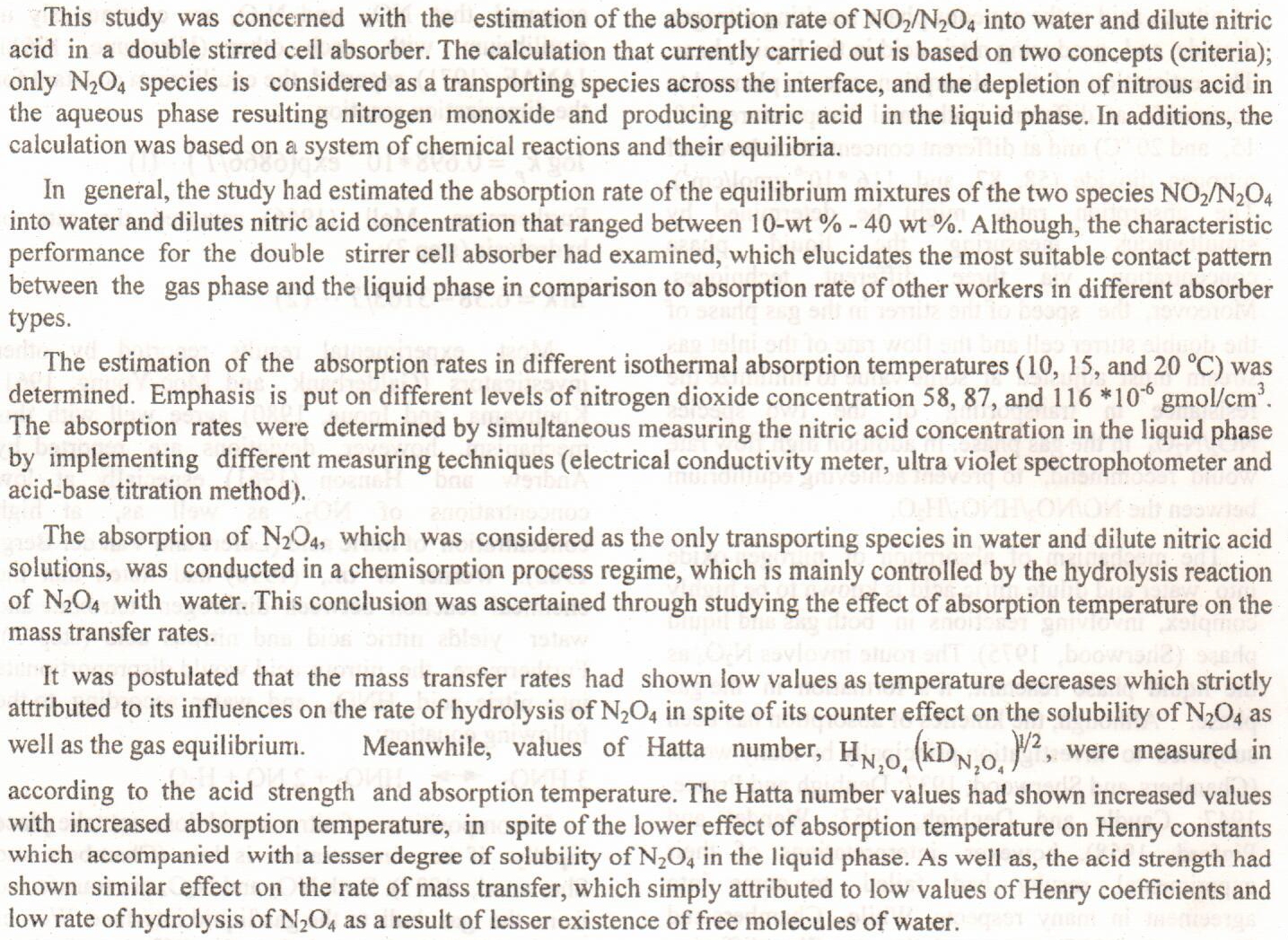
<span lang="EN-GB">This paper highlights the barriers that have led to a delay in the implementation of E-Health services in Iraq. A new framework is proposed to improve the E-Health sector using a SECI model which describes how explicit and tacit knowledge is generated, transferred, and recreated in organizations through main stages (socialization, externalization, combination and internalization). Class association rules (CARs) is integrated to mine the SECI model by extracting related rules which correspond to the medical advice. The proposed framework (SECICAR) can be done through a web portal to assemble healthcare professionals, patients in one environment. SECICAR will be applied to the hypertension community to show th
... Show More (5)
(5)
 (3)
(3)
KE Sharquie, AA Noaimi, HA Al-Mudaris, Journal of Cosmetics, Dermatological Sciences and Applications, 2012 - Cited by 6
 (3)
(3)
 (5)
(5)
 (5)
(5)
Re-use of the byproduct wastes resulting from different municipal and industrial activities in the reclamation of contaminated water is real application for green projects and sustainability concepts. In this direction, the synthesis of composite sorbent from the mixing of waterworks and sewage sludge coated with new nanoparticles named “siderite” (WSSS) is the novelty of this study. These particles can be precipitated from the iron(II) nitrate using waterworks sludge as alkaline agent and source of carbonate. Characterization tests using X-ray diffraction (XRD), scanning electron microscopy (SEM) and energy dispersive spectroscopy (EDS) mapping revealed that the coating process was c
 (39)
(39)
 (32)
(32)
Desulfurization of a simulated diesel fuel by different adsorbents was studied in a fixed-bed adsorption process operated at ambient temperature and pressure. Three different adsorption beds were used, commercial activated carbon, Cu-Y zeolite, and layered bed of 15wt% activated carbon followed by Cu-Y zeolite.Initially Y-zeolite was prepared from Iraqi rice husk and then impregnated with copper. In general, the adsorbents tested for total sulfur adsorption capacity at break through followed the order Ac/Cu-Y zeolite>Cu-Y zeolite>Ac. The best adsorbent, Ac/Cu-Y zeolite is capable of producing more than 30 cm3 of simulated diesel fuel per gram of adsorbent with a weighted average content of 5 ppm-S, while Cu-Y zeolite producing of
... Show More (7)
(7)
The relationship of hyperuricemia to kidney disease, diabetes, hypertension and the risk of cardiovascular diseases remain controversial. The aim of this study is to evaluate the use of uric acid (UA) levels to find the higher risk of cardiovascular disease (CVD) in patients with end stage renal disease that have diabetic nephropathy (DN), nephropathy with hypertension (NH) and patients with both diabetic nephropathy with hypertension (DNH). This study deals with 115 patients with end-stage renal disease under hemodialysis sub-grouped into 35 patients with (DN), 40 patients with (NH), and 40 patients with (DNH). Some biochemical parameters were determined in the serum of all participants such as HbA1c, fasting blood glucose (FBG), UA, urea,
... Show More (1)
(1)
A phytoremediation experiment was carried out with kerosene as a model for total petroleum hydrocarbons. A constructed wetland of barley was exposed to kerosene pollutants at varying concentrations (1, 2, and 3% v/v) in a subsurface flow (SSF) system. After a period of 42 days of exposure, it was found that the average ability to eliminate kerosene ranged from 56.5% to 61.2%, with the highest removal obtained at a kerosene concentration of 1% v/v. The analysis of kerosene at varying initial concentrations allowed the kinetics of kerosene to be fitted with the Grau model, which was closer than that with the zero order, first order, or second order kinetic models. The experimental study showed that the barley plant designed in a subsu
... Show More (10)
(10)
A phytoremediation experiment was carried out with kerosene as a model for total petroleum hydrocarbons. A constructed wetland of barley was exposed to kerosene pollutants at varying concentrations (1, 2, and 3% v/v) in a subsurface flow (SSF) system. After a period of 42 days of exposure, it was found that the average ability to eliminate kerosene ranged from 56.5% to 61.2%, with the highest removal obtained at a kerosene concentration of 1% v/v. The analysis of kerosene at varying initial concentrations allowed the kinetics of kerosene to be fitted with the Grau model, which was closer than that with the zero order, first order, or second order kinetic models. The experimental study showed that the barley plant designed in a subsu
... Show More (12)
(12)
 (10)
(10)
